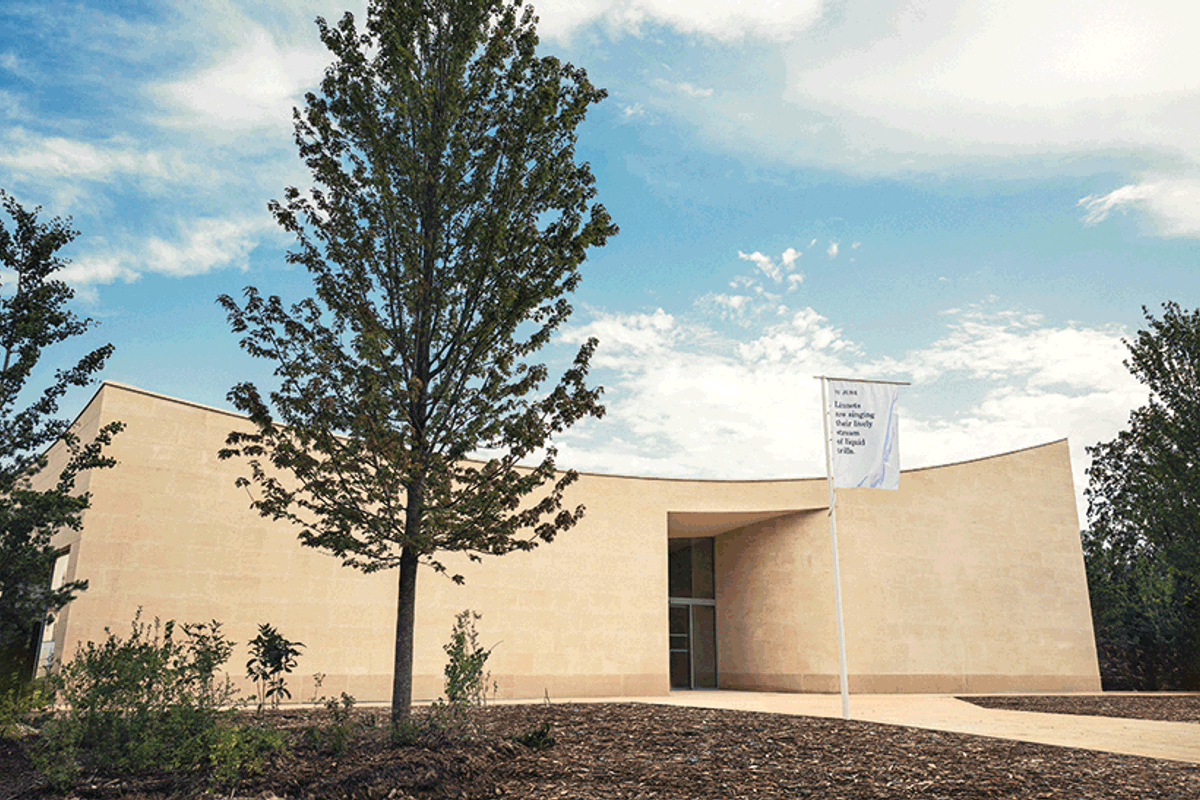Maison Ruinart, the oldest champagne house in the world and a major patron of the arts, has upgraded visitor facilities at its production site in Reims, 140km northeast of Paris, adding a bar, a terrace, a retail store and a new building to display a part of its art collection.
After a two-year renovation, slightly delayed by the Covid-19 pandemic, the 2.9-hectare property, named after its address, 4 Rue des Crayères, is reopening on 5 October. “We see it as a great metamorphosis in the continuity of the vision of the founder,” says Fabien Vallerian, the director of arts and culture at Ruinart.
Opposite Ruinart’s centuries-old structures now stands a graceful and environmentally friendly pavilion designed by Sou Fujimoto, the Japanese architect who designed the Serpentine Gallery Pavilion in London in 2013. “The initial plan was to create a pastiche of the Belle Époque period, but when the chief architect of historic monuments gave us his go-ahead, we realised that what we were looking for was a strong architectural gesture, a timeless landmark that would reflect the tension between tradition and modernity, while looking to the future,” Vallerian says.
Underground art
The building’s rounded shapes recall champagne bubbles sculpted by air and light. Invisible from the street, it only comes into view as visitors approach along a pathway carved in limestone—a reference to the site’s renowned crayères, underground galleries dug in Roman times and added to Unesco’s World Heritage List in 2015. First used as a quarry to build the city walls, then as refrigerated cellars by the Ruinart family, these crayères are home to works by Ugo Gattoni, Patricia Urquiola, David Shrigley and Mouawad Laurier.
Visitors enter the new building through rooms decorated by the French designer Gwenaël Nicolas. A bay window overlooks the main courtyard designed by the landscape artist Christophe Gautrand. More than 100 works by 36 artists are on show at 4 Rue des Crayères—half of Ruinart’s collection. The display, which runs from the depths of the historic chalk pits to the recently landscaped grounds, is the result of past and present collaborations. Many installations include local materials from the winemaking industry such as vine stock, wood, metal and mycelium.
Today, Ruinart supports 30 contemporary art fairs in the world, including Frieze, Art Basel and Tefaf, as well as a number of art prizes. In preparation for the Reims reopening, Ruinart turned its Carte Blanche residency programme, launched in 2008, into a collective invitation: last year, six artists were commissioned to draw inspiration from 4 Rue des Crayères.
Among them was Marcus Coates, whose Nature Calendar is the first installation visitors encounter on entering Fujimoto’s pavilion. It features rotating flags, each one delivering a different piece of information about the region’s ecosystem on a daily basis, such as which flowers are blooming or which birds are due to begin emigrating.
Recent acquisitions include works by Henrique Oliveira, Thijs Biersteker, Pascale Marthine Tayou, Tomoko Sauvage and Andrea Bowers. “We don’t want to museumise,” Vallerian says. “The display keeps growing. We left three spaces vacant, to be able to showcase more art in the future.”


